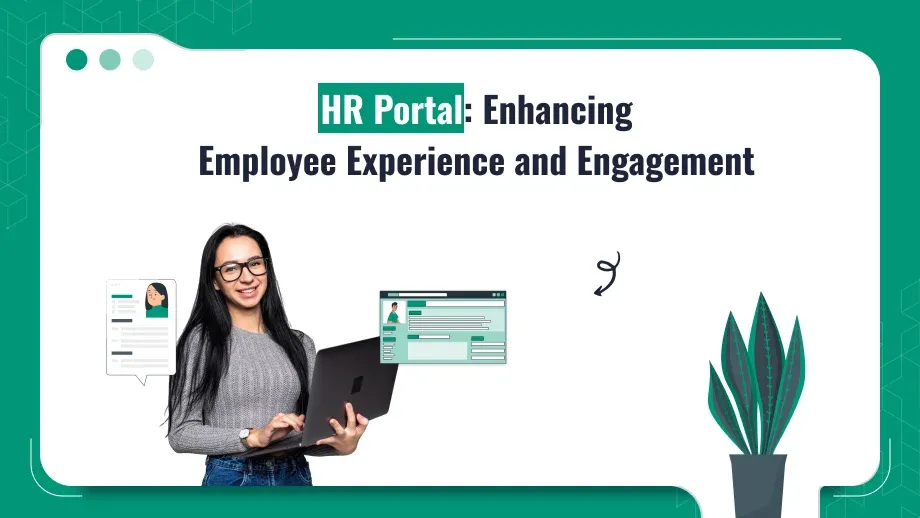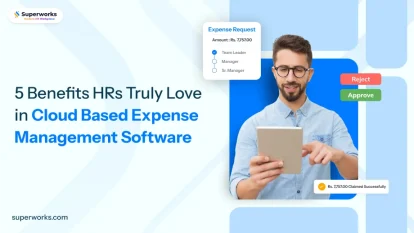
In this fast-running world, organizations are always in pursuit of ways to enhance operational efficiency and employee satisfaction. One of the best solutions is to use an HR portal. HR systems are a central system in digital form that streamlines the HR and employee experience. HR has never been applied as passionately through the use of technology, where it’s now possible for employees to have access to information to submit requests and engage with the organization like never before.
HR is important in making daily HR activities simpler so that the HR teams and employees can focus on what is relevant. Here, in the next article, we will discuss in detail the different features of an HR portal, its benefits, and how it alters the workplace.
Human Resources Portals
A. What is HR Portals?
An HR portal into information and services for employees in the Human Resource: A bridge of communication that bridges the gap between the HR department and employees in ensuring a good flow of information and supplying employees with the best means of handling their HR tasks.
B. Features Of Human Resources Portals
- Self-Service: Employees input their information, access payslips, and manage other benefits on their own without assistance.
- Document Management: Easy access to documents and streamlines HR-related documents, policies, and procedures to ensure adherence and transparency. /li>
- Communication Tools: Forums and announcements to keep the employees informed and engaged.
- Feedback Mechanisms: Surveys and polls to measure employee satisfaction and gather insights to improve.
C. Types of HR Portals
- Employee HR Portal: It is a self-service portal through which the employee can update his personal information, can view pay stubs, and training materials.
- HRIS Employee Portal: Comprehensive system to integrate HR data to enable advanced reporting and analytics to help in decision-making.
- Attendance Portal: Designed to track employee attendance portal and manage leave requests to ensure accurate records and compliance.
- HRMS ESS Portal: Employee self-service within a broader HR management system to offer features like leave applications and personal data updates.
Benefits of Human Resources Portals
A. Efficiency
A human resources portal reduces the administrative burden of HR teams. While creating automation for the submission of documents and even enrollment of benefits, HR persons can indulge in strategic endeavors. This saves time and reduces errors leading to better HR operations.
B. Communication
HR enables open communication between employees and the HR department. Employees can access announcements, updates, and resources and always be informed of changes within the organization. And being able to communicate directly through the portal makes the HR team more responsive.
C. Employee Engagement and Satisfaction
A human resource portal allows employees to oversee the HR functions of their employees. This independence brings ownership and engagement resulting in higher levels of employee satisfaction. Where employees have control over their HR interactions, they are likely to be engaged in their work as well as participate in organizational culture.
D. Data Management and Compliance
With a human resources portal organizations can store sensitive employee data securely and easily. This is especially important with all the regulatory compliance requirements. HR maintains accurate records so it’s easier to produce reports during audits. A centralized system reduces the risk of data loss and ensures all employee self-service portal have access to the latest policies and procedures.
Looking to enhance your HR processes?
Explore the HR portal options available to find the perfect fit for your organization!
Features that make Employee Experience better
A. User Interface and Navigation
All such good HR portals should have user-friendly interfaces for easy navigation and access to necessary information. This can include intuitive menus, search functions,s and mobile accessibility. A seamless user experience will encourage employees to use the portal regularly and maximize its benefits.
B. Personalisation
The best employee portals offer personalization options. Employees can customize their dashboards. This can include setting up notifications, favorite documents, and frequently used resources. Another one of the other purposes for which personalization enhances the user experience is through helping the employees discover the information that they want quickly.
C. Resources and Information
The ideal resource portal for human resources should be able to access:
- Policy and procedures:: Using the HR Portal, workers can examine and understand the policy of the business where they are employed and become informed about their rights and the responsibilities they have. This transparency between the organization and its employees establishes an organically evolving bond of trust.
- Training and Development: Portals can host training materials, online courses, and development resources to support continuous learning. By providing easy access to professional development opportunities organizations can upskill employees and career growth.
D. Performance Management
In such portals, performance management functions are located where employees can establish their goals and monitor progress, besides receiving feedback. Such a culture of continuous improvement is encouraged, and the individual’s performance is aligned with the organization’s objectives.
Tools within Human Resources Portals
A. Communication Tools
human resources portals can have forums and announcement boards where employees can engage with each other and the HR department. These tools promote collaboration and build a sense of community within the organization. The communication channels are essential for a healthy work environment.
B. Feedback Mechanisms
To keep a finger on the pulse of employee sentiment HR portals can have feedback mechanisms such as surveys and polls. This allows organizations to measure satisfaction and identify areas for improvement. Regular feedback will help HRMS software in India teams address concerns proactively and show employees that their opinions matter.
C. Recognition and Rewards
Having a recognition and rewards system within the Human portal will boost employee morale. Employees could celebrate each other’s success stories and develop a healthy work culture. Individual contributions recognized do not merely increase the morale but also develop an appreciation and team culture.
Determining the Effectiveness of HR Portals on the Employee Experience
A. KPIs to Measure
To measure the effectiveness of a human resources portal organizations should track:
- Employee engagement: How often employees use the portal and participate in feedback mechanisms.
- Portal feature usage: Which features are being used most can guide future development.
- Reduction in HR administrative tasks: Measuring the time spent on manual tasks can show the portal is working.
- Employee satisfaction scores: Regularly measure employee satisfaction through surveys to see if the portal is improving the overall employee experience.
B. Employee Feedback and Satisfaction Surveys
Conducting regular employee satisfaction surveys will give HR many insights into the perceptions of such an activity. This feedback will help organizations to make changes to improve the user experience. By asking for input from employees organizations are showing they are committed to continuous improvement.
Best Practices for an Employee-Centric Human Resources Portal
A. Employee involvement in Design
To create a good human resources portal you need to involve employees in the design process. Conduct focus groups and gather feedback to ensure the portal meets their needs. Employee feedback forms the bedrock of a user-friendly experience that makes sense to the workforce.
B. Continuous Updates and Changes Based on Feedback
An HR portal should change over time. Updating the portal regularly based on user feedback and technology advancements will keep it relevant and useful. Organizations should have a feedback loop where employees can give their opinions and suggest changes.
C. Train Employees to Use the Portal
Comprehensive training on how to use the HRMS software India is key to its success. This can include workshops, tutorials, and easily accessible help resources. If employees feel confident using the portal they will be more engaged and satisfied.
Future of HR Portals in India
A. Ai And Automation In Human Resources Portals
Integration of AI and automation is increasingly becoming prevalent in HR. These technologies will encourage user experience through more customized personal recommendations, making time-consuming manual tasks automated. For instance, chatbots can help employees find information more quickly or submit requests and streamline several HR processes.
B. Better Data Security
As organizations are relying more and more on human resources portals for sensitive data management, better data security will be key. This means multi-factor authentication and encryption protocols. Data privacy will not only the organization but also the employee.
C. Changing User Expectations
As technology changes employee expectations will change. HR portals should keep up with this revolution with newer functionalities and seamless user experience. Staying abreast of technology goes hand in hand with the satisfaction and engagement of employees.
D. Integration with other systems
This future HR will be even more integrated with other business systems like payroll, project management, and communication tools. This will give the employees an all-rounded view of their workplace environment and will boost productivity and collaboration.
Summary
The development of an HR portal represents one such strategic step forward by an organization in the direction of improving employee experience and engagement. Centralized platforms powered by cloud-based HRMS software can empower employees, promote effective communication, and streamline HR practices at the organizational level. Over time, cloud-based HRMS portals will become a critical component in reshaping the face of future work.
In summary, implementing a human resources portal is not a new technology; it is about having a more efficient, engaged, and satisfied workforce. Organizations that invest in their human resources portal will be the leaders in employee engagement and satisfaction.





